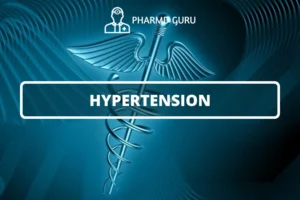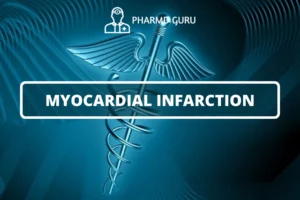The pulmonary function test (PFT) is a diagnostic tool used to assess the functioning of the respiratory system. It provides valuable information about lung capacity, airflow, and gas exchange, helping healthcare professionals evaluate respiratory health, diagnose lung diseases, monitor disease progression, and assess treatment effectiveness. In this article, we will delve into the basics of pulmonary function testing, its significance, and the parameters measured during the test.
SCROLL DOWN TO THE BOTTOM OF THIS PAGE FOR ACTUAL NOTES.
Table of Contents
- Importance of Pulmonary Function Testing
- Parameters Measured in Pulmonary Function Test
- Spirometry
- Lung Volume Measurements
- Diffusion Capacity
- Indications for Pulmonary Function Testing
- Preparation and Procedure
- Interpretation of Results
- Limitations of Pulmonary Function Testing
1. Importance of Pulmonary Function Testing
Pulmonary function testing plays a crucial role in evaluating respiratory health and diagnosing various lung conditions. It helps identify lung diseases at an early stage, provides objective measurements of lung function, and assists in monitoring disease progression and treatment effectiveness. By assessing lung capacity, airflow, and gas exchange, pulmonary function tests aid in developing personalized treatment plans and improving patients’ quality of life.
2. Parameters Measured in Pulmonary Function Test
Pulmonary function tests evaluate several key parameters:
- Forced Vital Capacity (FVC): The maximum volume of air a person can forcefully exhale after taking a deep breath.
- Forced Expiratory Volume in 1 second (FEV1): The volume of air forcefully exhaled in the first second during an FVC maneuver.
- FEV1/FVC Ratio: The percentage of the FVC that can be exhaled in the first second, indicating airflow obstruction.
- Peak Expiratory Flow Rate (PEFR): The maximum flow rate during a forced exhalation.
- Total Lung Capacity (TLC): The maximum volume of air in the lungs after a maximum inhalation.
- Residual Volume (RV): The volume of air remaining in the lungs after a maximum exhalation.
- Diffusing Capacity (DLCO): The ability of the lungs to transfer gases from inhaled air to the bloodstream.
3. Spirometry
Spirometry is a common pulmonary function test that measures lung function by evaluating airflow. It involves forcefully exhaling into a device called a spirometer, which records various parameters such as FVC, FEV1, and PEFR. Spirometry is useful in diagnosing conditions such as asthma, chronic obstructive pulmonary disease (COPD), and restrictive lung diseases.
4. Lung Volume Measurements
Lung volume measurements provide information about the size and capacity of the lungs. Techniques such as plethysmography and gas dilution methods are used to determine parameters like TLC, RV, and functional residual capacity (FRC). These measurements aid in diagnosing conditions like interstitial lung diseases, lung hyperinflation, and obesity-related respiratory disorders.
5. Diffusion Capacity
Diffusion capacity testing assesses the efficiency of gas exchange in the lungs. It measures the ability of oxygen to diffuse from inhaled air into the bloodstream and the removal of carbon dioxide from the blood. DLCO is a commonly measured parameter in this test and is useful in evaluating conditions like pulmonary fibrosis, emphysema, and pulmonary vascular diseases.
6. Indications for Pulmonary Function Testing
Pulmonary function testing may be indicated in various scenarios:
- Respiratory symptoms: Evaluation of individuals with symptoms such as shortness of breath, cough, or wheezing.
- Preoperative assessment: To assess lung function before surgery, especially in individuals with underlying respiratory conditions.
- Occupational monitoring: Monitoring lung function in individuals exposed to occupational hazards that may affect respiratory health.
- Disease monitoring: Regular testing to monitor disease progression and treatment effectiveness in conditions like asthma, COPD, and cystic fibrosis.
7. Preparation and Procedure
Before undergoing a pulmonary function test, certain preparations may be necessary, such as avoiding heavy meals, refraining from smoking, and withholding bronchodilator medications. During the test, the individual will be instructed to perform specific breathing maneuvers, including deep inhalation and forceful exhalation. The healthcare professional will guide and monitor the process to ensure accurate measurements.
8. Interpretation of Results
Interpreting pulmonary function test results requires comparing the measured parameters with predicted values based on age, gender, height, and ethnicity. Abnormalities in the results may indicate underlying lung diseases, airflow obstruction, restrictive lung disorders, or impaired gas exchange. The interpretation should be done by a qualified healthcare professional experienced in pulmonary function testing.
9. Limitations of Pulmonary Function Testing
Although pulmonary function testing is a valuable diagnostic tool, it does have certain limitations. Factors such as patient effort, technique, and variability in measurements can affect test results. Additionally, some conditions may not show significant abnormalities in pulmonary function tests, necessitating further evaluation with additional tests or imaging studies.
ACTUAL NOTES:




